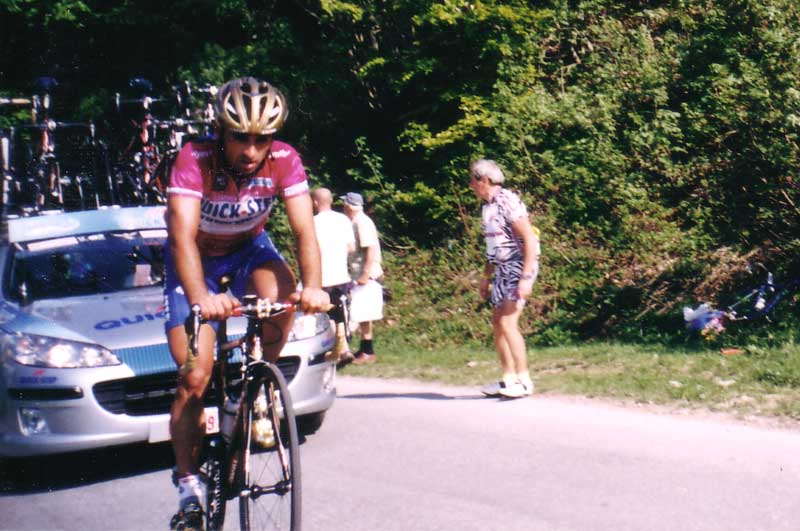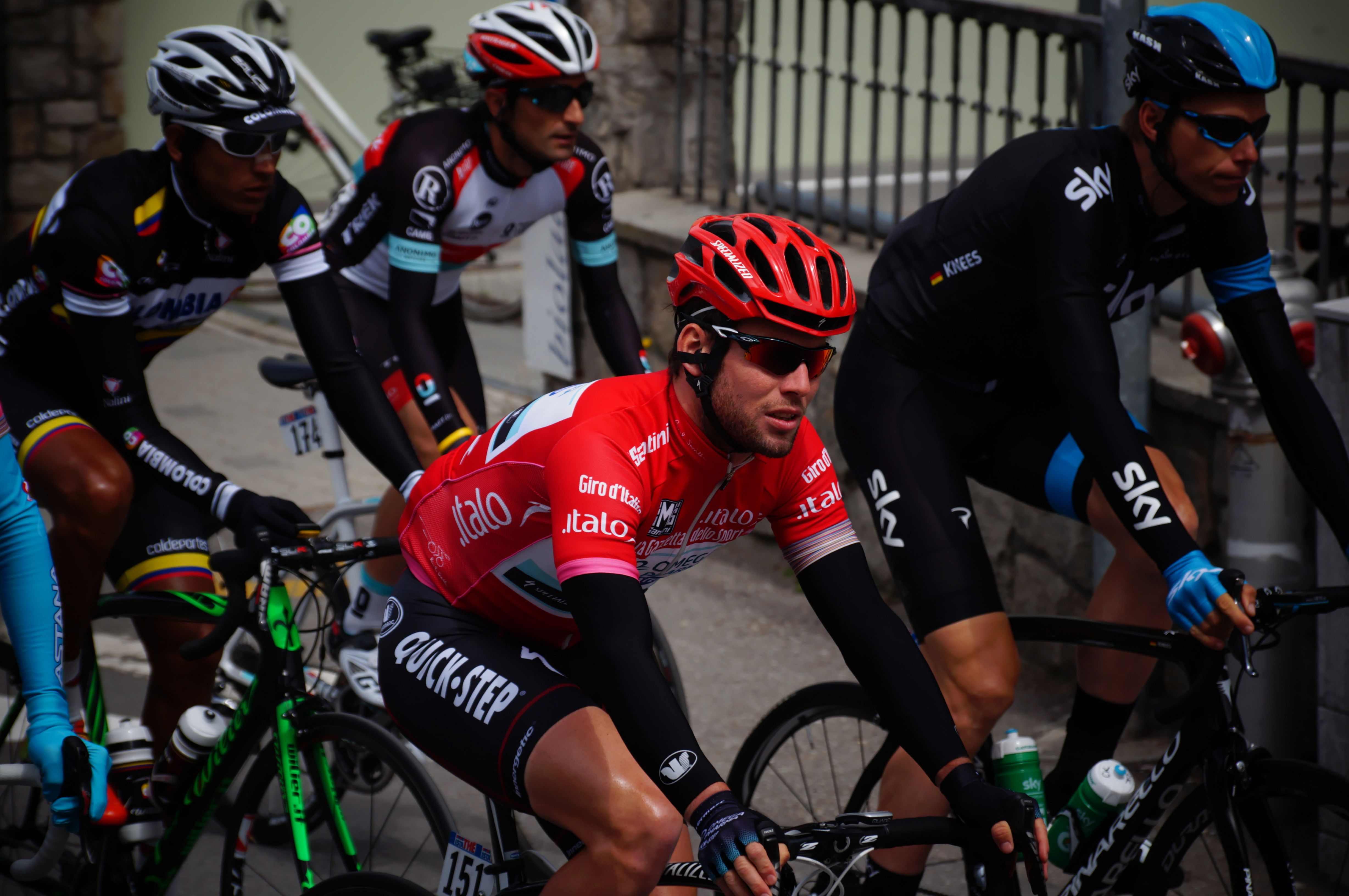Points classification in the Giro d'Italia on:
[Wikipedia]
[Google]
[Amazon]
The points classification in the Giro d'Italia is one of the secondary classifications in the Giro d'Italia. It is determined by points awarded for placings in the daily stages, regardless of time gaps. From 1967 to 1969 the leader wore a red jersey but in 1970 it was changed to mauve, and named the ''maglia ciclamino'' (from Italian: ''mauve jersey''), the name of the colour in Italian being derived from the alpine flower the
 The first points classification in the Giro was used in
The first points classification in the Giro was used in




 * The "Year" column refers to the year the competition was held, and
* The "Year" column refers to the year the competition was held, and
Cyclingnews.com: Giro classifications 2007
/ref>
cyclamen
''Cyclamen'' ( or ) is a genus of 23 species of perennial flowering plants in the family Primulaceae. ''Cyclamen'' species are native to Europe and the Mediterranean Basin east to the Caucasus and Iran, with one species in Somalia. They g ...
. The red jersey was re-introduced in 2010, as the ''maglia rosso passione''. However, in April 2017 RCS Sport, the organisers of the Giro, announced that the ''maglia ciclamino'' would be revived for the 2017 Giro d'Italia
The 2017 Giro d'Italia was the 100th edition of the Giro d'Italia, one of cycling's Grand Tour races. The race started on 5 May in Alghero on the island of Sardinia, and ended on 28 May in Milan. The race was won by Tom Dumoulin, who became ...
.
History
 The first points classification in the Giro was used in
The first points classification in the Giro was used in 1958
Events
January
* January 1 – The European Economic Community (EEC) comes into being.
* January 3 – The West Indies Federation is formed.
* January 4
** Edmund Hillary's Commonwealth Trans-Antarctic Expedition completes the third ...
, called ''Trofeo A. Carli''. The first rider in each stage was given 15 points, down to one point for the fifteenth rider. There was no jersey associated, and the next year it was not used again.
The ranking points system was reintroduced in 1966, when there was no associated jersey, while for the two subsequent editions a red jersey was awarded to the leader of the classification. From 1969 to 2009, the jersey was mauve, but often referred to as ''cyclamen''.
Points are given to riders who finish among the first in a stage, independent of the time difference. There are also points given to the first cyclists to reach the intermediate sprints. There is an intermediate sprints competition, with names changing from year to year, (Intergiro, Expo Milano 2015, Traguardo Volante), which used to give a blue jersey to its leader.
Among the winners of the points classification are Mario Cipollini
Mario Cipollini (; born 22 March 1967), often abbreviated to "Cipo", is a retired Italian professional road cyclist most noted for his sprinting ability, the longevity of his dominance (his first pro win came in 1988, his last in 2005; 170 p ...
(three times), Alessandro Petacchi
Alessandro Petacchi (born 3 January 1974) is an Italian former professional road racing cyclist, who rode professionally between 1996 and 2015. A specialist Cycling sprinter, sprinter, Petacchi has won 48 Grand Tour (cycling), grand tour stages ...
and in 2006 the future world champion Paolo Bettini
Paolo Bettini (born 1 April 1974 in Cecina, Livorno, Tuscany) is an Italian former champion road racing cyclist, and the former coach of the Italian national cycling team. Considered the best classics specialist of his generation, and probably o ...
.
At the other grand tours
In road bicycle racing, a Grand Tour is one of the three major European professional cycling stage races: Giro d'Italia, Tour de France, and Vuelta a España. Collectively they are termed the ''Grand Tours'', and all three races are similar in ...
, the Tour de France
The Tour de France () is an annual men's multiple-stage bicycle race primarily held in France, while also occasionally passing through nearby countries. Like the other Grand Tours (the Giro d'Italia and the Vuelta a España), it consists ...
and the Vuelta a España
The Vuelta a España (; en, Tour of Spain) is an annual multi-stage bicycle race primarily held in Spain, while also occasionally making passes through nearby countries. Inspired by the success of the Tour de France and the Giro d'Italia, the ...
, there are also points classifications; the points classification in the Tour de France rewards a green jersey to its leader, as does the points classification in the Vuelta a España
The points classification in the Vuelta a España is a secondary classification in the Vuelta a España, in which the cyclists are ranked in a points classification based on the finish of each rider every stage.
History
For the first time, a po ...
.
Current rules
From 2009 to 2013, the winner of each stage receives 25 points, independent of the type of stage (unlike the better known points classification in the Tour de France, where winning a mountain stage gives fewer points than winning flat stage). The next cyclist receives 20 points, the next ones 16, 14, 12, 10, 9, 8, 7, 6, 5, 4, 3, 2, until the fifteenth cyclist who receives one point. Every stage (excluding time trials) also has an intermediate sprint. The first to cross that sprint receives 8 points, the next one 6 points, the next ones 4, 3, 2, until the sixth cyclist who receives one point. In 2014 this was changed so that there are three levels of stages, each with its own point classification scheme. The first level, presumably the flat stages, will award points to 20 riders on a scale from 50 to 1 point. Level two stages will award points to the top 15 riders on a scale of 25 to 1 and level three stages will award points to the top 10 riders on a scale of 15 to 1 point. Points at intermediate sprints will follow a similar scale. If two or more cyclists have the same number of points, the ranking is determined by the most stage victories, followed by the most intermediate sprint victories, followed by the lowest time in thegeneral classification
The general classification (or the GC) in road bicycle racing is the category that tracks overall times for riders in multi-stage races. Each stage will have a stage winner, but the overall winner in the GC is the rider who has the fastest cumulat ...
.
Winners




 * The "Year" column refers to the year the competition was held, and
* The "Year" column refers to the year the competition was held, and wikilink
In computing, a hyperlink, or simply a link, is a digital reference to data that the user can follow or be guided by clicking or tapping. A hyperlink points to a whole document or to a specific element within a document. Hypertext is text wit ...
s to the article about that season.
* The "Stages" column refers to the number of stages in the race, counting half stages as two and prologues as one.
* The "Stage wins" column refers to the number of stage wins the winner had during the race.
* The "Margin" column refers to the margin of time or points by which the winner defeated the runner-up.
Multiple winners
As of 2022, 10 cyclists have won the Points classification in the Giro d'Italia more than once.By nationality
Riders from thirteen countries have won the Points classification in the Giro d'Italia.Notes
#The original winner wasAlessandro Petacchi
Alessandro Petacchi (born 3 January 1974) is an Italian former professional road racing cyclist, who rode professionally between 1996 and 2015. A specialist Cycling sprinter, sprinter, Petacchi has won 48 Grand Tour (cycling), grand tour stages ...
, who was stripped of his results from the 2007 Giro after a positive test for elevated levels of salbutamol.
#Awarded after the disqualification (due to doping) of apparent winner Danilo Di Luca
Danilo Di Luca (born 2 January 1976) is a former Italian professional road racing cyclist, best known for winning the 2007 Giro d'Italia, but also for several positive doping tests, the last of which resulting in a lifetime ban from the sport.
D ...
#Awarded after the disqualification (due to doping) of apparent winner Alberto Contador
Alberto Contador Velasco (; born 6 December 1982) is a Spanish former professional cyclist. He is one of the most successful riders of his era, winning the Tour de France twice ( 2007, 2009), the Giro d'Italia twice (2008, 2015), and the V ...
Azzurri d'Italia classification
The Azzurri d'Italia classification ( en, ''' Azure or Sky Blue Italy'') is an award in the Giro d'Italia in which points are awarded to the top three stage finishers (4, 2 and 1 point). It is similar to the standard points classification for which the leader and final winner are awarded the red jersey but no jersey is awarded for this classification, only a cash prize to the overall winner. For the 2007 Giro d'Italia, the Azzurri d'Italia winner won€
The euro sign () is the currency sign used for the euro, the official currency of the eurozone and unilaterally adopted by Kosovo and Montenegro. The design was presented to the public by the European Commission on 12 December 1996. It consists o ...
5,000./ref>
Past winners
Note
#The original winner wasAlessandro Petacchi
Alessandro Petacchi (born 3 January 1974) is an Italian former professional road racing cyclist, who rode professionally between 1996 and 2015. A specialist Cycling sprinter, sprinter, Petacchi has won 48 Grand Tour (cycling), grand tour stages ...
, who was stripped of his results from the 2007 Giro after a positive test for elevated levels of salbutamol.
#Awarded after the disqualification (due to doping) of apparent winner Alberto Contador
Alberto Contador Velasco (; born 6 December 1982) is a Spanish former professional cyclist. He is one of the most successful riders of his era, winning the Tour de France twice ( 2007, 2009), the Giro d'Italia twice (2008, 2015), and the V ...
.
References
External links
* {{Giro d'Italia Points winner Italian sports trophies and awards Giro d'Italia Cycling jerseys